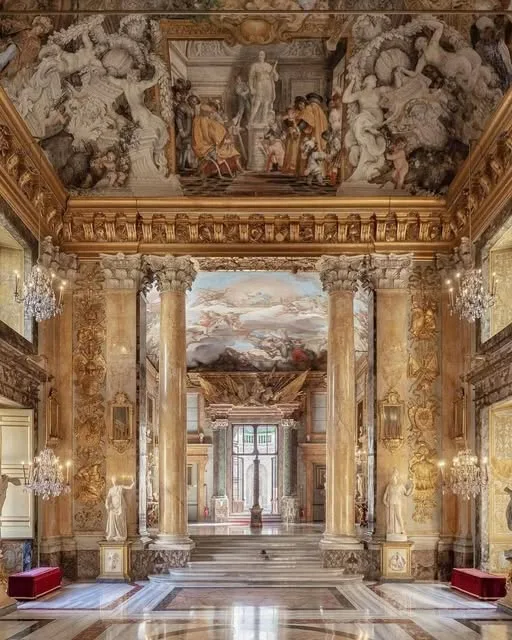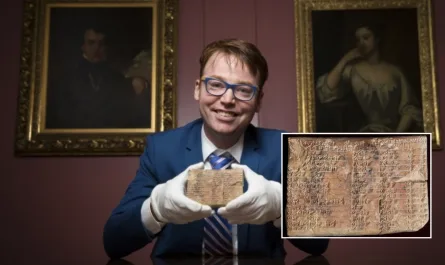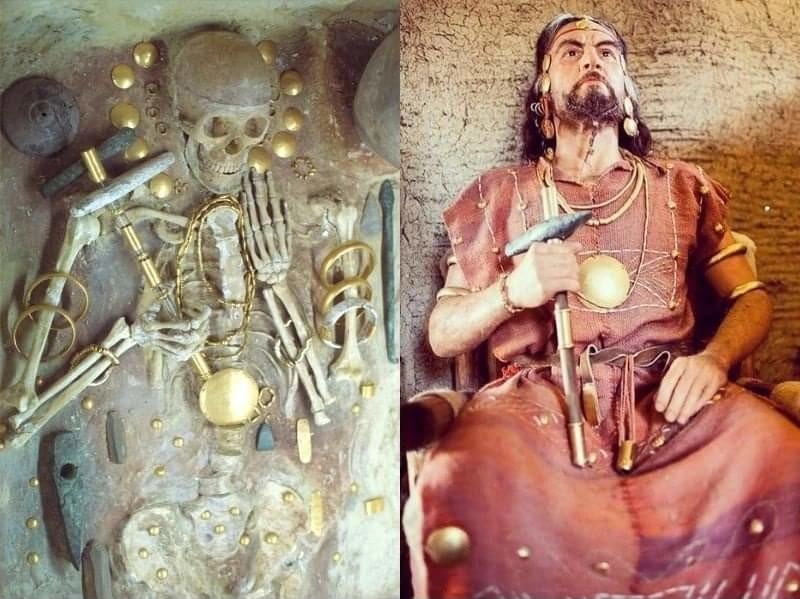Palazzo Colonna: A Timeless Roman Legacy
Perched in the heart of Rome, Italy, Palazzo Colonna stands as one of the city’s oldest and largest private palaces, a testament to the enduring legacy of the Colonna family. Construction began in the 14th century, initiated by this noble lineage, which traces its roots to the 12th century and the town of Colonna, near Rome, from which it derives its name. Still partially inhabited by the Colonna family after eight centuries, the palace blends medieval origins with Renaissance splendor. Despite significant destruction during World War II, its reconstruction by 1958 restored its grandeur, making it a cultural landmark as of July 2025.

Historical Context
The Colonna family emerged as a powerful Roman dynasty in the 12th century, gaining prominence through political alliances, military prowess, and papal connections. Their wealth and influence allowed them to commission Palazzo Colonna in the 14th century, initially as a fortified residence near the Quirinal Hill. Over centuries, the palace evolved, with major expansions in the 15th and 17th centuries under figures like Cardinal Girolamo Colonna and Pope Martin V (Oddone Colonna), who resided there. The family’s rivalry with the Orsini family shaped its defensive design, reflecting Rome’s turbulent medieval politics.
The palace remained the Colonna family’s private property until 1916, when it was granted in perpetual emphyteusis (a long-term lease) to the City of Marino. This arrangement allowed the city to establish its municipal headquarters within the palace, though the Colonna family retained significant control. The palace’s history took a dramatic turn during World War II when, on February 2, 1944, Anglo-American bombings nearly demolished it, targeting its strategic location near key infrastructure. Reconstruction began shortly after, culminating in its restoration by 1958, preserving its historical essence.
Architectural Evolution
Palazzo Colonna’s architecture reflects a rich tapestry of styles, evolving from a medieval fortress to a Renaissance and Baroque masterpiece:
- Medieval Foundations: The original 14th-century structure featured thick stone walls, towers, and a courtyard, designed for defense during Rome’s factional wars.
- Renaissance Expansion: In the 15th century, the palace was transformed with elegant loggias, frescoed halls, and gardens, reflecting the family’s cultural patronage. The Galleria Colonna, a grand gallery adorned with 17th-century frescoes by artists like Antonio del Massaro, became a highlight.
- Baroque Flourish: The 17th-century additions, including the opulent apartments and the Princess Isabelle Colonna Garden, added Baroque grandeur with stucco work, gilded ceilings, and marble statues.
- Post-War Reconstruction: After the 1944 bombing, which destroyed much of the eastern wing, architects rebuilt the palace using original plans and salvaged materials, restoring key rooms like the Sala Grande and the Throne Room. The effort preserved its historical integrity while adapting it for modern use.
The palace spans approximately 20,000 square meters, with over 1,000 rooms, though only a portion is open to the public. Its location near Piazza Santi Apostoli integrates it into Rome’s urban fabric, with views of the Colonna Gardens offering a serene contrast to the city’s bustle.
Cultural and Historical Significance
Palazzo Colonna is more than a residence; it is a repository of Roman history and art. The Galleria Colonna houses an extensive collection of paintings by masters like Guido Reni, Tintoretto, and Annibale Carracci, alongside family portraits and tapestries. The palace served as a political hub, hosting papal visits and diplomatic events, and its library contains rare manuscripts from the Colonna archives.
The family’s eight-century residency underscores their enduring influence, with descendants like Prince Prospero Colonna maintaining ties to the property. The 1916 lease to Marino reflects a shift toward public use, though the Colonna family retains private quarters, blending tradition with civic function.
Preservation and Visitor Experience
Managed by the Colonna family in partnership with the City of Marino, Palazzo Colonna underwent significant restoration post-1958, with ongoing maintenance to preserve its frescoes, marble, and structural integrity. As of July 2025, parts of the palace are open to the public on Saturdays, with guided tours in English and Italian (tickets: €12 for adults, €10 for concessions). The Galleria and select apartments are highlights, showcasing art and history, while the gardens offer seasonal events like classical music concerts.
The palace’s wartime damage and reconstruction are documented in exhibits, adding a layer of resilience to its narrative. Posts on X praise its “hidden gem” status, with visitors marveling at the “time-capsule feel” and the “stunning art collection,” though some note limited access due to its private status.
Challenges and Future Prospects
Preserving Palazzo Colonna is challenging due to its age, urban setting, and the need to balance private and public use. Pollution, seismic activity in Rome, and wear from tourism threaten its delicate interiors. The Colonna family, with support from cultural organizations, funds conservation, but resources are finite. Future plans include digitizing the archives for global access and expanding garden tours to boost revenue for upkeep.
Conclusion
Palazzo Colonna, begun in the 14th century by the Colonna family, stands as a majestic symbol of Rome’s noble heritage, its 800-year history etched into its stone walls. From its medieval origins to its Baroque splendor and post-war rebirth by 1958, the palace embodies resilience and cultural richness. As a private residence and public treasure, it invites visitors to explore a living legacy, its grandeur enduring through the sands of time as of July 2025.





